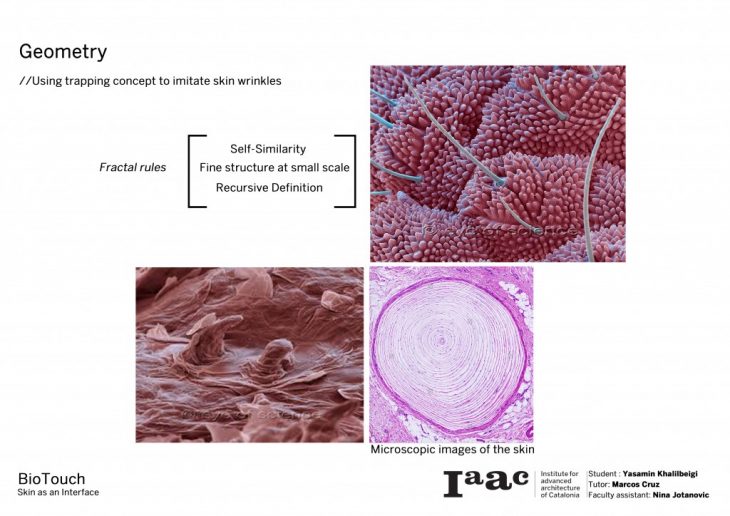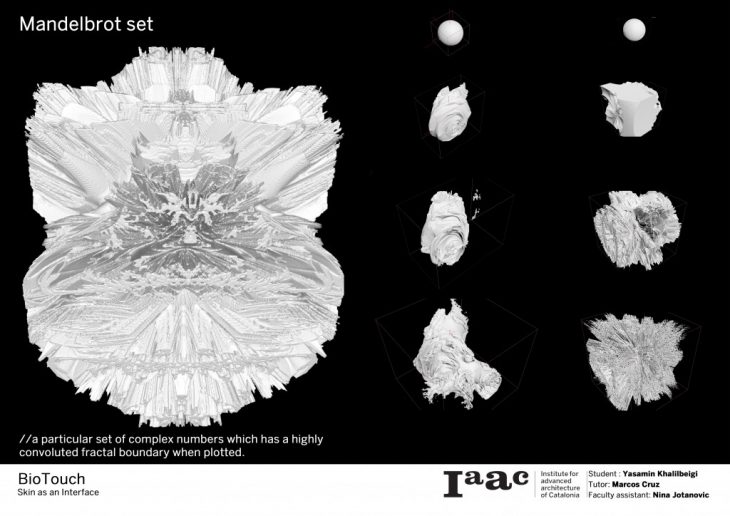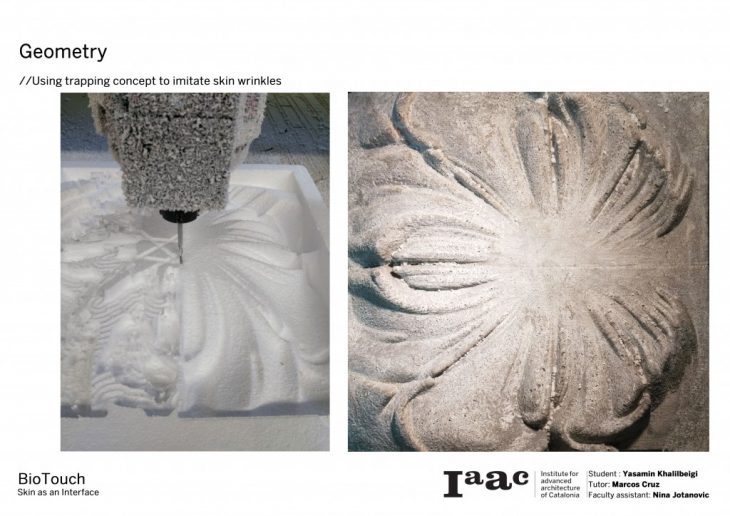BioTouch
//Skin as an interface
BioTouch is a project creates bio-interaction between human’s skin and architectural product’s skin by focusing on pH contents.
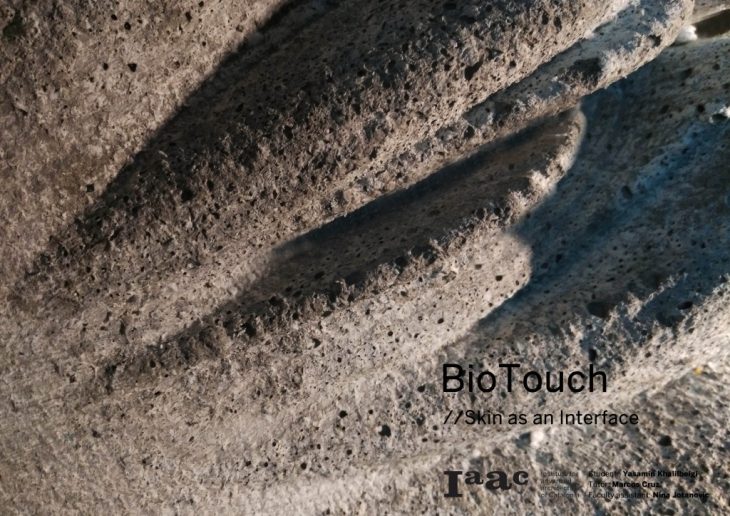
Due to the use of basic materials such as cement, plaster, metal, etc. our built environment is mostly alkaline. 
Our skin is our largest organ which is in touch with the environment and has a pH about 5.5 . Acidification of the skin prevents the colonization, penetration and growth of harmful organisms or microorganisms and give the skin the self-healing property while it gets wounded. This fact that less acidic skins, wrinkle more during the time explain the claim that alkalinity as well as acidity is harmful for our body. However the symptoms are revealed in a longer period.
By a quick review, the miss-balance between human skin and built environment pH, is obviously observed. The project tries to contribute to form a new acidic layer as a new skin for architectural products to imitate the same principles as human skin and plays the same role as a physical barrier from the foreign assaults and improve the self-healing property of alkaline material ideally. Moreover the new made skin creates a bio-interaction between the human skin and architectural product’s skin in order to interchange microorganisms which are beneficial for their hosts.
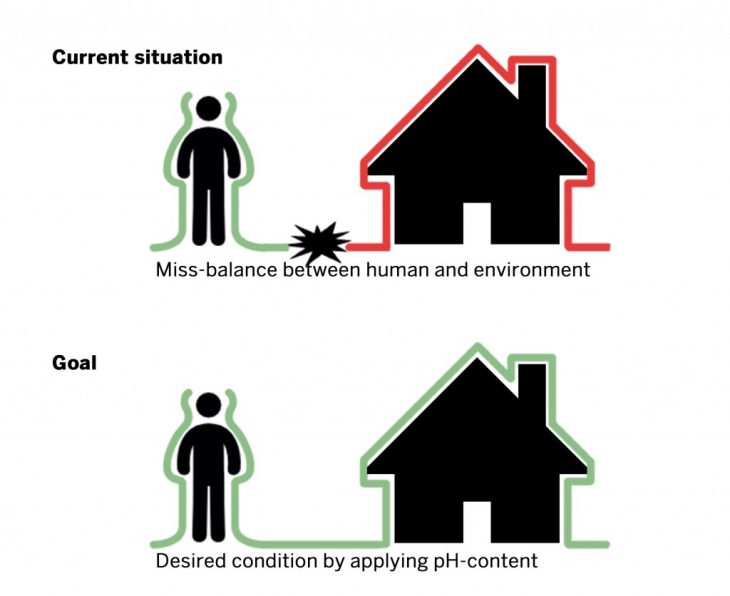
For approaching this goal, the factor that regulates the pH of the skin needs to be defined and implemented if feasible. Skin regulates the pH with its most abundant organism colonizing it named Staphylococcus. The Staphylococcus is classified as a genus, includes at least 40 species of knows as pathogenic, medium pathogenic and non-pathogenic. The most challenging part of the project is to find out which specie is feasible for cultivating on the surface of alkaline material ( In this thesis project, it is experimented by concrete) . After an intensive research on different species, S.xylosus has been chosen as the non-dangerous bacterium that starts propagating in alkaline environment and slightly changes the pH of the material. Furthermore this bacteria is able to eradicate damaging organisms. ( Experiments are being carried out to record pH transformation )
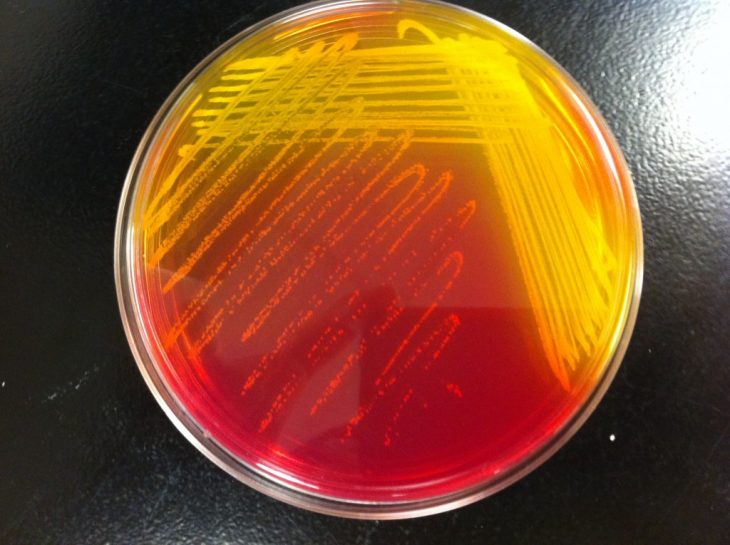
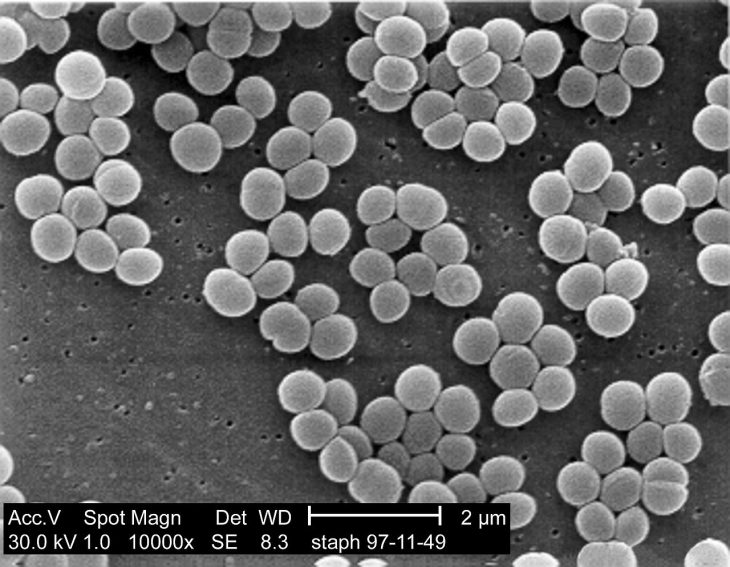
For the final prototype, different parameters of the project needs to be defined precisely in order to contextualize it correctly. As shown in the diagram below, after breaking down the essential factors, exact parameters of the project has been extracted as main contributors to an appropriate case study.
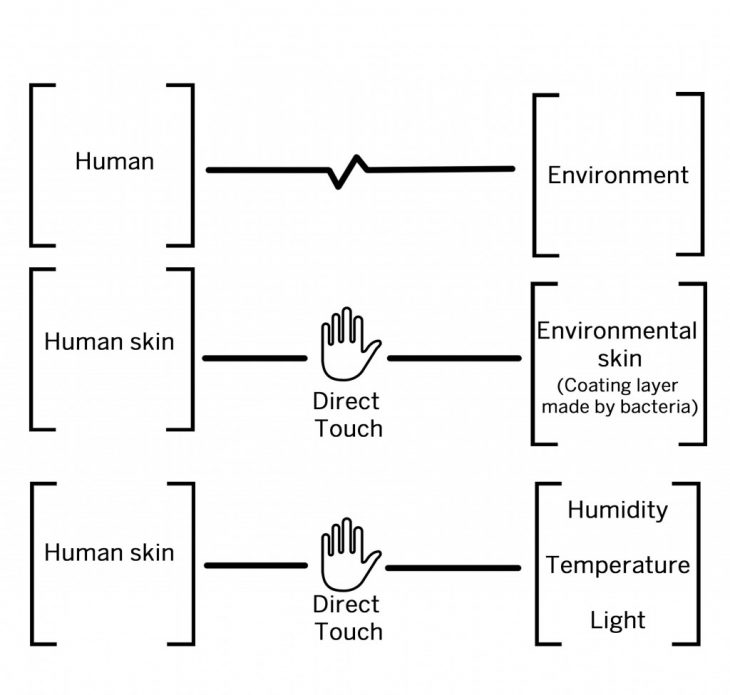
humidity, temperature, and light are the essential factors for bacterial growth. Moreover for bio-interaction between human’s skin and new bacterial skin, a maximum area of direct touch, should be considered.
In terms of geometry exploration, the design is striven to follow the same principles as skin’s. Fractals, as an abundant natural geometrical phenomena, are chosen to be the basic concept of geometries.
